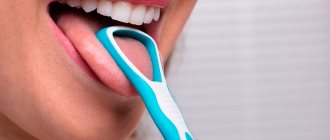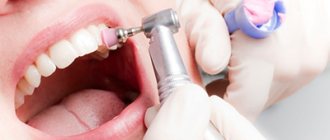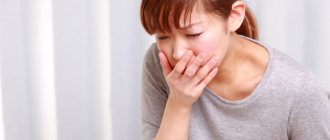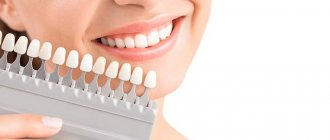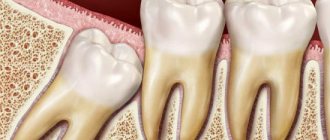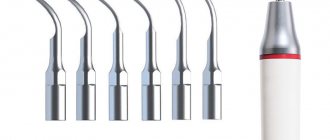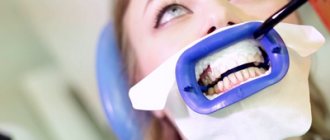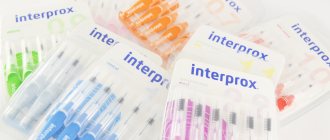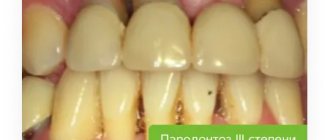Parents try to teach their children oral hygiene from early childhood. However, many of them have questions about how often to carry out procedures and how long to brush their teeth. Dentists recommend performing manipulations 2 times a day (morning and evening). However, this frequency of hygiene procedures can be considered average. After all, some patients need to brush after every meal to prevent caries and other dental disorders. Let's consider the features of oral hygiene for patients of different categories.
The right time
People who carefully monitor their health try to remove bacterial plaque after each meal. Such manipulations reduce the risk of enamel destruction: carious bacteria are able to multiply and activate only in a suitable environment. On clean teeth, it will be more difficult for pathogenic flora to develop and produce acids that destroy the top layer of teeth.
During hygiene procedures, it is necessary to take into account some rules regarding the timing of cleaning. For example, morning oral care is best done after breakfast, and not vice versa. The need for morning cleansing after meals is due to several factors:
- distortion of the taste properties of food after using toothpastes;
- the possibility of staining the enamel after taking coloring drinks and foods (especially after using bleaching compounds).
Attention! Avoid brushing your teeth immediately after eating acidic foods. Acid tends to soften plaque and tooth tissue, so hygiene measures can lead to thinning of the enamel and increased sensitivity to cold and hot foods.
After breakfast, you should wait 30 minutes before brushing your teeth. This rule must be followed by both children and adults. It minimizes the appearance of microcracks in the enamel.
Don't forget about an integrated approach
Don't forget about mouth rinses. Their use after brushing reduces the amount of plaque, which reduces the risk of developing many dental diseases. The patented formula of LISTERINE® rinses contains 4 carefully purified, stable and balanced components: thymol, eucalyptol, menthol, methyl salicylate.
*In-vitro studies, where Listerine was added to planktonic and biofilm forms of Kills up to 99.9% of oral bacteria (or bad bacteria or bad breath bacterai) in lab studies oral bacteria or pooled salivary bacteria, have demonstrated up to 99 .9% bacterial kill. 1. Fine DH et al. Comparative antimicrobial activities of antiseptic mouthrinses against isogenic planktonic and biofilm forms of Actinobacillus actinomycetemcomitans. J Clin Periodontol. July 2001; 28(7):697-700. Data on file: 2. RR946-0114 (1998) 3. RR931-1150 (2002)
Up to contents
How long
At different times, scientific sources and dentists spoke about different times for oral hygiene. In books from the 50s you can find information where it is recommended to perform at least 150-200 brush strokes. It was believed that only with such a thorough procedure would it be possible to achieve a good effect in removing food debris and plaque.
Modern dentists believe that 10-15 movements in each direction are enough to achieve a positive effect when caring for the oral cavity. Basically, the time for brushing teeth depends on the structure of the elements, the age of the patient and the presence of orthodontic structures.
Cleaning takes the longest for people with bite pathologies (crossbite, twisted elements) and patients wearing braces
Under the corrective structures, food residues are actively clogged, which cannot be eliminated using a standard hygiene kit. For this reason, people undergoing orthodontic treatment should use additional care products (brushes, irrigators, dental floss and rinses).
The minimum duration of hygiene procedures is at least 3 minutes. This is due to the fact that the fluoride components of the pastes are not immediately absorbed into the enamel, but rather some time after the start of manipulation. It is also not recommended to immediately spit out the foam formed as a result of cleaning. For the best effect from using fluoride-containing products, you need to keep the paste in your mouth. The maximum time for oral care is 4 minutes. More thorough cleansing is harmful because it can lead to abrasion of the enamel layer and increase its sensitivity to external irritants. The optimal duration of manipulation is from 3 to 4 minutes.
How often
How often should you brush your teeth? Dentists recommend that patients use a standard hygiene kit less than 2 times a day. This is especially true when brushing your teeth in the evening. Bacterial plaque accumulated during the day quickly provokes tooth destruction and damage to their tissues by caries. However, one standard set will not be enough. Dentists recommend using dental floss throughout the day (optimally after each meal). If you don’t have a brush, paste or floss at hand, then after eating you need to rinse your mouth with water.
For regular use, dentists do not recommend using pastes with a high content of abrasive components. It is advisable to alternate the drug with a regular gel. The course of using an abrasive should not exceed 1 month, otherwise the enamel of the elements will become thinner and make the teeth brittle.
What to expect during a hygiene visit?
During your initial examination and dental cleaning, our hygienist will review and evaluate your medical history to determine if there are any medical conditions that may affect your treatment.
At each subsequent visit, the Doctor will evaluate your oral health and note any changes. Each new patient visit begins with our specialists performing x-rays. If you are pregnant or have a medical condition that prevents you from having an x-ray, please note this in your medical record. If you have had an x-ray within the last 12 months, please send it to our dental clinic by email
or bring the study disc with you. Our goal is not to take an x-ray, but to have diagnostic material so that we can provide you, our patients, with a comprehensive dental examination and draw up a comprehensive treatment plan. The doctor will screen for oral cancer and oral lesions, and also test for oral symptoms of other serious diseases, including heart disease, cancer and diabetes. One of our dentists will conduct an examination of your dentition (dental examination) to look for possible new and recurring cavities. If one is found, conditions and treatment options will be explained to you. During a periodontal examination, your gums will be assessed for signs of gum disease by measuring the periodontal pockets with a probe. Our hygienists are trained and certified to administer local anesthesia to relieve discomfort during treatment, although this is rarely required as they have a very light hand and therefore a very gentle touch. As a rule, the simple use of desensitizers provides comfortable tooth brushing. At the end of your visit, the dental hygienist will teach, review, and reinforce proper oral hygiene techniques, including effective brushing and flossing. Our patients prefer to be treated by the same dentist. Regarding hygiene appointments, we support the same. Having the same professionals working with you regularly develops mutual understanding and continuity of dental care and knowledge of the individual needs of each patient.
Time depending on method
There are several professional mouth cleaning techniques that anyone can practice at home. The chosen technique also determines how long hygiene will take. Let's consider popular ways to care for the elements of the oral cavity:
How to floss
- Charter method. Involves shaking movements with a brush located at an angle of 45-50 degrees to the gums. The method allows you to effectively clean food debris in hard-to-reach areas and perform a natural massage of the gums.
- Bass method. The technology is similar to the Charter method, but differs in more frequent vibrating movements. It imitates the movements of an electric toothbrush, which removes plaque and unhardened tartar more effectively than standard devices.
- Leonard's method. Involves brush movements perpendicular to the surface being treated.
- Reite's method. It is based on rolling movements of the pile in the direction from the gums to the cutting part of the teeth.
- Smith-bell system. When caring for the oral cavity, a person additionally performs movements that simulate chewing food. Use the brush in a circular motion with slight pressure of the bristles on the enamel.
The time for cleaning teeth using different methods may vary. It must be remembered that each surface of the crown must be processed at least 8 times. The total time of the hygiene procedure, regardless of the chosen method, cannot be less than 2.5 minutes for adults.
If a person cannot independently determine the time for optimal oral care, then he needs to see a dentist. The doctor will select the optimal method of care depending on the structural features of the row elements and the presence of malocclusion in the patient.
What types of toothbrushes and toothpastes are there?
In any store or pharmacy you can see several varieties of toothbrushes and toothpastes. Such diversity was not invented without reason, because these funds should be selected taking into account the characteristics of a particular person.
Toothbrushes differ in their degree of hardness:
- The soft bristles do not injure the gums and are therefore suitable for people with increased sensitivity and patients with periodontal disease.
- Hard brushes provide good plaque removal, but can damage your gums.
- Medium-hard bristles are universal and suitable for most people.
If you don’t know which brush you need, your dentist will help you choose it after he conducts an examination.
What toothpaste should you use to make your teeth white? How do different pastes differ from each other?
Toothpastes may contain abrasives (help remove plaque and slightly whiten the enamel), fluoride, anti-inflammatory components and other ingredients. Therefore, it is necessary to choose a toothpaste based on the oral condition of a particular person. For example, various pastes can be used to eliminate bleeding gums, their inflammation, or to reduce sensitivity. If you have such problems, you need to select a certain type of toothpaste that your dentist can recommend.
Is more often better?
Many patients believe that the frequency of oral care depends on the number of snacks they eat per day. Dentists consider this reasoning to be incorrect. When used frequently, the components of many toothpastes cause irritation and drying of the mucous membranes of the mouth. The only exceptions are those cases when a person has eaten sweets and high-carbohydrate foods.
In the daytime, to prevent caries, using floss or a brush without pastes will be enough.
Dentists do not discourage the use of chewing gum after snacks. The product stimulates increased production of saliva, which cleans food debris and pathogenic microorganisms from the surface of elements
People with braces, artificial teeth, and a history of digestive system diseases should not indulge in chewing gum.
Why every person needs to have their teeth and gums cleaned
The oral cavity is a kind of gateway for various pathogenic microorganisms to enter the human body. Remains of food, stuck in the teeth, begin to rot and decompose. As a result, bacteria accumulate in the interdental spaces, leading to the development of various dental diseases. If there is a constant focus of infection in the mouth, it can spread to the internal organs and provoke even more serious pathologies.
Only with a properly selected brush can you thoroughly clean food crumbs from the interdental spaces and massage your gums. Toothpaste, purchased taking into account age restrictions, will balance the microflora in the oral cavity, disinfect it and provide long-lasting fresh breath. It is impossible to destroy pathogenic microflora in the mouth in any other way.
Dentist advice
When can you brush your teeth? All dentists recommend resorting to hygienic procedures after meals (both morning and evening). This is because after consuming foods again, bacteria will continue to multiply in the mouth due to food debris on the teeth. Doctors recommend treating your teeth especially carefully at night. Evening cleansing should not be limited to using paste and brush. In addition, it is recommended to use floss or irrigator, rinse aid.
Dentists give valuable recommendations not only on the timing of hygiene procedures, but also on the technique of their implementation:
- before starting cleaning, rinse the bristles of the brushes with running water;
- squeeze out no more than 1 cm of paste onto the bristles, since abundant foam will interfere with the effective removal of bacterial plaque;
- the procedure begins with the upper jaw and gradually moves to the elements of the lower row;
- The pile of the product is held at an angle of 45 degrees to the surface being treated;
- The chewing surfaces of the molars are treated with circular and translational rotations.
Particular attention is paid to cleaning the outer surface of the tongue. A large number of bacteria are concentrated on its surface, which subsequently spread to the mucous membranes of the mouth and tooth enamel. The speaking organ is treated with the outside of a brush or a special scraper.
After the manipulations, it is recommended to massage the gums with light stroking movements. The procedure is optimal for the prevention of periodontal diseases.
After each meal, you can use special rinses or self-prepared herbal decoctions. Instead of special means, ordinary boiled water is also used to wash off food residues. In addition, you need to use floss.
Cleansing in children
It is necessary to care for baby teeth just as carefully as for permanent teeth. Otherwise, teeth destroyed by the pathological process will cause the formation of a malocclusion.
How long should children brush their teeth? On average, the procedure takes 2 minutes. If it is difficult for a child to independently navigate the duration, then he can buy a brush with a timer or install a stopwatch on his mobile phone. These manipulations will make the oral care procedure more fun.
How to tell if your teeth are brushed well
You can check the quality of teeth cleaning in 2 ways:
- Walk along the inner and outer surfaces of the row with your tongue. Roughness and unevenness on the enamel surface are a sign of insufficient hygiene. Protrusions on the surface of teeth represent unremoved bacterial plaque.
- Use tablets that stain food debris and deposits on teeth. Problem areas are tinted and become more visible.
The main reasons for poor quality care are short use of a brush or the use of low-quality hygiene products.
To maintain dental health, it is important not only to brush your teeth properly. It is necessary to carry out the procedure regularly, for 3-4 minutes. Brushing teeth for children is reduced to 2 minutes.
